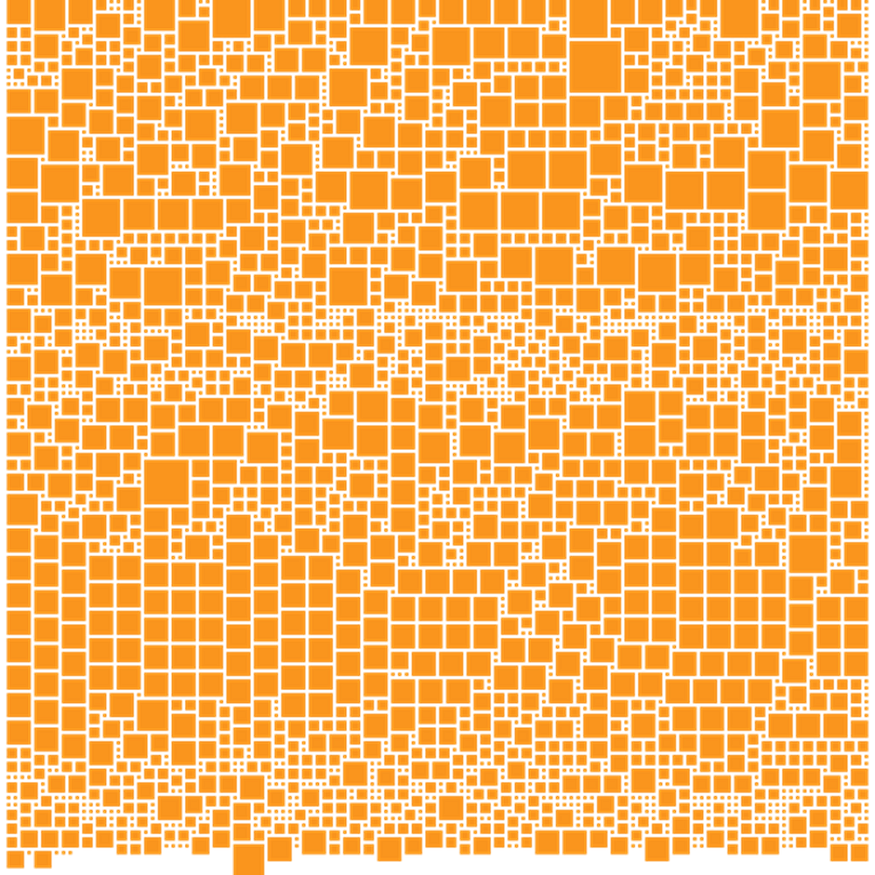Digital Matter Theory
Much Ado About NATs?
You scroll Twitter for hours. You see NAT, UNAT, DMT and other cool-sounding three-letter acronyms. Then you read that some NAT-CATs (whatever they mean) have been sold for a decent amount. But you fail to wrap your head around what all of this mean. Are they much ado about nothing or a truly innovative breakthrough in Ordinals? Let’s try to understand this novel idea from the first principles.
Digital Matter Theory
People always tried to find patterns in nature. Sometimes they succeeded, sometimes they failed, for example, when they attempted for centuries to convert lead to gold. Patter recognition is how sciences about physical matter, e.g., physics, chemistry and so on, came into existence.
Digital matter theory (DMT) is finding patterns too. However, the substrate is not nature but Bitcoin blockchain (in fact, though it can be any blockchain network, DMT was created when people started looking to Bitcoin data. that’s why in this article we’ll stick to Bitcoin only.) Some users realized that there are patterns inherent in Bitcoin blocks data and one can create a form of digital substance by using these patterns.
If you think about it, Bitmap theory developed by Bitoshi Blockamoto about which we have written in this article extensively, is an example of DMT though the term DMT didn’t exist when Blockamoto introduced Bitmaps. Bitmap also leverages patterns found in Bitcoin blocks data. Let’s look at two Bitmaps. The first one is below: And this is the second one:
And this is the second one: Now, if I tell you that one of these two Ordinals is 728936.bitmap and another one is 280.bitmap. Can you guess which one is which? We know that the number in the name of a particular Bitmap refers to a Bitcoin block on whose data that Bitmap was inscribed. And the patterns you see on a Bitmap denotes the number of transactions on that particular Bitmap. You can realize that blocks with relatively smaller numbers (also called block height) were mined in the early days of Bitcoin. This will lead to the hypothesis that the second Bitmap is the one with the block height of 280 because during the nascency of Bitcoin it was not uncommon that a Bitcoin block contained only 1 transaction. Imagine 2009 or 2010 when Bitcoin was used by several thousand people at most; so, you can correctly conclude that a block with fewer transactions — in this case only 1 transaction as you see — should be the one with the smaller block height. Conversely, a block with the block height 728936 is the more recent one; in fact, it was mined in March 2022 and it contains more than 2,500 transactions. Therefore, 728936.bitmap looks so different from 280.bitmap — much more fragmented and with more parcels.
Now, if I tell you that one of these two Ordinals is 728936.bitmap and another one is 280.bitmap. Can you guess which one is which? We know that the number in the name of a particular Bitmap refers to a Bitcoin block on whose data that Bitmap was inscribed. And the patterns you see on a Bitmap denotes the number of transactions on that particular Bitmap. You can realize that blocks with relatively smaller numbers (also called block height) were mined in the early days of Bitcoin. This will lead to the hypothesis that the second Bitmap is the one with the block height of 280 because during the nascency of Bitcoin it was not uncommon that a Bitcoin block contained only 1 transaction. Imagine 2009 or 2010 when Bitcoin was used by several thousand people at most; so, you can correctly conclude that a block with fewer transactions — in this case only 1 transaction as you see — should be the one with the smaller block height. Conversely, a block with the block height 728936 is the more recent one; in fact, it was mined in March 2022 and it contains more than 2,500 transactions. Therefore, 728936.bitmap looks so different from 280.bitmap — much more fragmented and with more parcels.
The reason why I went further in depth in explanation is to clarify pattern finding in Bitcoin blocks data. DMT is about creating non-arbitrary digital assets from blockchain’s historical data.
The height of one of the most recent mined blocks at the time of writing this was 832,786. This block contains 2,662 transactions. Transaction hashes (also called transactions ID) of some of them you can find below. You go through these hashes to find “42” in them.
5aacf7857013cbd4105f48cd6397d336d62eb6fa7496757788de843be3e505be
4017d3dd5266a413131807ef5b175bd40852349a9b9d59ad73c16159cc164757
0eed3a0e4c8fe56ccc99208ed628d358448bee094bcfa3eedd1bb739b1d215b5
59b2586340a58e609bb93cfb04f03ffe66ae0a728c0c76bfd1b0808fba00e412
38ad760c26cd80db949715f2f304565748a1d4e256a0d8226c01570b07bb24e9
bcdc6eed41f0aa4e3913dfc446a34b7c1fb257919f26f9972ad4e2c95b1969ee
It is tiresome and tedious. So, I wrote a small Python script to count the “42” patterns in transaction hashes of the block 832,786. (Yoo don’t have to be a developer to do this, there are many resources where you can fetch Bitcoin block data from.) It turned out there are 572 “42”s in this block. This means that if I were to create a non-arbitrary token based on this pattern, 572 tokens would have been mined. After approximately 10 minutes another block is mined with the block height of 832,787. Python script runs again and produces 502 which means that 502 more tokens will be mined. Every 10 minutes Bitcoin blockchain network expands, and issuance of my tokens will change according to blockchain data.
You start to realize that this issuance is based on predefined rules which uses only Bitcoin blockchain data. Supply of new tokens is not arbitrary as that of other digital assets. When developers launch a token, its supply is designed by them arbitrarily. On the contrary, non-arbitrary tokens are minted according to patterns in blockchain data. This is where “non-arbitrary” comes from.
.element
Inscribing a specific pattern, such as “42”, is called “.element”. An element is a way of formalizing pattern recognition into an inscription. Any piece of blockchain data can be used to discover a pattern in it. Every element is named according to the following format:
<name>.<pattern>.<field>.element
Name and field are required, while pattern is optional. Name is the title of the element. Pattern is the identified pattern in the field of our choice. Field is a particular dataset of Bitcoin blockchain data. Blockchain data contains a ton of information, such as block hash, bits, difficulty, transaction ID, difficulty and so on. Refer to the whitepaper to understand which field parameter corresponds to which field number.
Our pattern is “42” in transaction hash data. Whitepaper states that transaction hash corresponds to number 17. If we want to name our element “flagship”, it will look like this:
flagship.42.17.element
Whenever, a new block is added to Bitcoin blockchain, new “flagship” tokens will be minted in an amount equal to the number of pattern “42” found in its transaction hash field. This is what the concept of non-arbitrary token (NAT) is about. NAT is the application of DMT for non-arbitrary token design.
UNATs
Think of the UNAT concept as the combination of NAT and NFT ideas. Whenever a NAT is being mint, a piece of art can be put onto it to make it unique. This is the concept of UNAT — adding art to mint inscription which makes individual NATs unique, hence the name UNAT (unique non-arbitrary token). NAT is a fungible asset while UNAT is a non-fungible. Note that a NAT and a UNAT associated with it are separate, independent assets. Transferring a UNAT to an address doesn’t transfer fungible NATs with itself.
The first implementation of UNAT protocol is Natcats. The genesis, i.e., the first Natcat was inscribed on 8th February.
Conclusion
Digital matter theory is a novel idea with the basic premise that by using patters in blockchain data one can create a form of digital substance. DMT assets are not invented or created, they can only be discovered because they have always existed in historical blockchain data. Once a new block is added to the blockchain, it becomes immutable and cannot be erased or modified. Like chemical elements, elements of DMT can be discovered from the substrate which in this case is not Nature but Bitcoin block data.
































